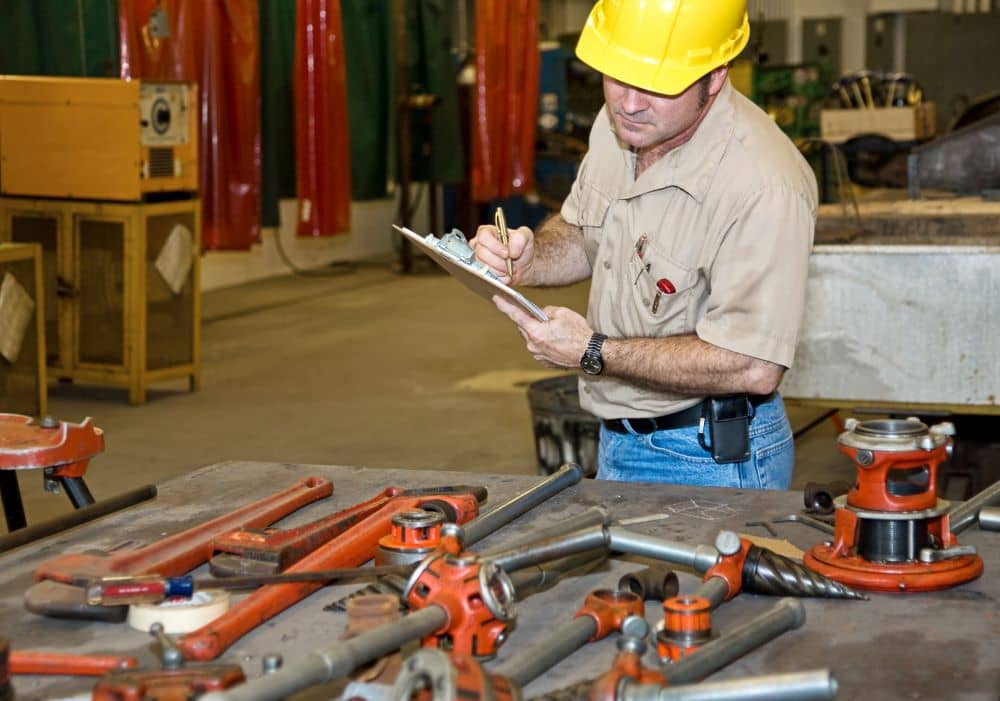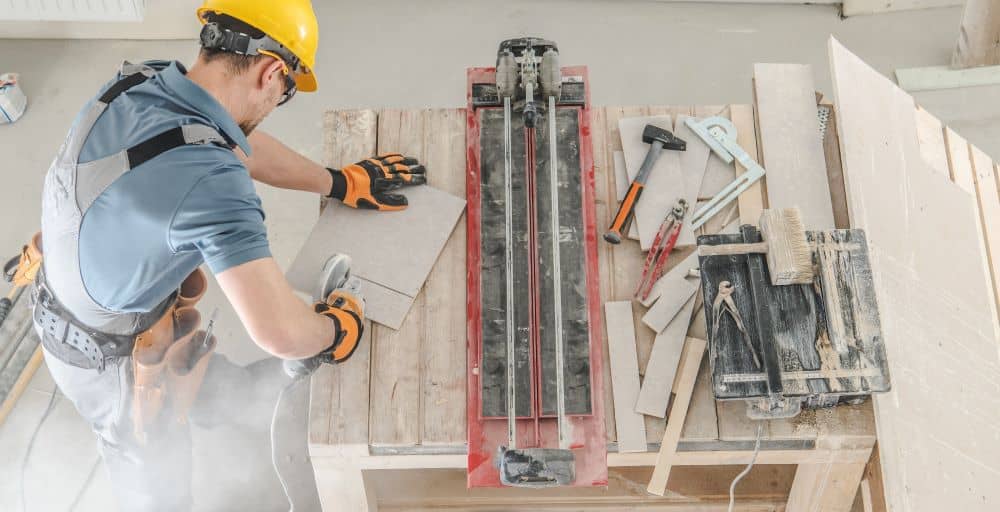As a tradesman, your tools and equipment are essential to your livelihood. They are the backbone of your work, and without them, you wouldn’t be able to complete jobs and earn a living. However, the reality is that these tools and equipment are at risk of theft, damage or loss, which can lead to significant financial losses and impact your ability to work.
That’s why equipment protection is crucial for tradesmen. This guide is designed to help you take the necessary steps to protect your tools and equipment by which you can minimise the risks and protect your valuable assets.
Whether you’re a seasoned tradesman or just starting, this guide will help you prioritise equipment protection, and ensure that you’re taking the necessary steps to protect your tools and equipment. So, let’s get started!
Risks and Threats to Tools and Equipment
The risks can come in many forms, and they can vary depending on the type of work you do and the location of your job sites. Here are some common risks and threats to consider:
- Theft: One of the most significant risks tradesmen face is theft. This can include theft from job sites, vehicle break-ins, or even theft from your own workshop.
- Damage: Your tools and equipment are subject to wear and tear, and can also be damaged by accidents or misuse.
- Loss: It’s easy to misplace or lose small tools or equipment, which can be costly to replace.
- Weather: Your tools and equipment can also be damaged by weather conditions such as rain, wind, or extreme temperatures.
To identify and assess potential risks to your tools and equipment, it’s important to consider factors such as the type of work you do, the location of your job sites, and the security measures in place. Here are some steps you can take to identify and assess potential risks:
- Conduct a risk assessment: Take an inventory of your tools and equipment, and assess the potential risks for each item. Consider the likelihood and impact of each risk.
- Evaluate job site security: Assess the security measures in place at your job sites, such as fences, gates, and security cameras.
- Consider transportation risks: Evaluate the risks associated with transporting your tools and equipment to and from job sites.
- Analyse insurance coverage: Review your insurance policies to ensure that you have adequate coverage for theft, damage, or loss of your tools and equipment.

Equipment Protection Strategies
There are several equipment protection strategies that tradesmen can use to protect their tools and equipment from theft, damage, or loss. Here are some common strategies to consider:
- Physical security: One of the most effective ways to protect your tools and equipment is by implementing physical security measures such as locks, security bars, and alarm systems. However, physical security measures can be costly to install and maintain.
- Inventory management: Keeping track of your tools and equipment through inventory management systems can help you identify any missing or stolen items quickly. This can help you recover lost or stolen items and reduce the risk of future theft or loss.
- Tracking technology: Tracking technology such as GPS can help you locate stolen items and increase the chances of recovery. However, these technologies can be costly and may require ongoing subscription fees.
- Identification and marking: Marking your tools and equipment with identifiable markings such as serial numbers or engravings can help deter theft and increase the chances of recovery if your items are stolen. However, marking tools and equipment can be time-consuming and may not be effective in preventing all types of theft.
- Insurance: Having insurance coverage for your tools and equipment can provide you with financial protection in case of theft, damage, or loss. However, insurance policies can be expensive and may not cover all types of loss or damage.
Protecting Your Tools
Here are some tips and strategies for protecting specific types of tools and equipment:
- Power tools: Power tools are among the most commonly stolen items on job sites. To protect your power tools, consider engraving your name or business name on them, and keep a record of their serial numbers. Additionally, store your power tools in a secure location, such as a locked toolbox or van.
- Hand tools: Hand tools are also vulnerable to theft, particularly smaller items like screwdrivers and pliers. To protect your hand tools, consider using a tool belt or pouch to keep them organised and easily accessible. Additionally, mark your tools with a unique identifier, such as coloured tape or embedded marks, to make them easily identifiable.
- Heavy equipment: Heavy equipment, such as excavators and bulldozers, are often targeted by thieves due to their high value. To protect your heavy equipment, consider using anti-theft devices, such as immobilisers or GPS trackers. Additionally, store your equipment in a secure location, such as a locked yard or warehouse.
Properly storing and securing your tools and equipment is also critical to protecting them from damage, theft, or loss. Here are some tips for storing and securing your tools and equipment:
- Use a secure storage location: Store your tools and equipment in a secure location, such as a locked toolbox or van. If you need to store your equipment on a job site overnight, consider using a secure storage container or trailer.
- Lock it up: Always lock your toolbox or van when you are not using it. Use high-quality locks, such as padlocks or deadbolts, and consider installing an alarm system.
- Keep an inventory: Keep an inventory of your tools and equipment, including their serial numbers and value. This can help you track your tools and equipment and provide proof of ownership in case of theft or loss.

Tradesman Tool Insurance
Tradesman tool insurance is specifically designed to protect the tools and equipment of tradesmen. Unlike other types of tool insurance, which may only cover certain types of tools or equipment, tradesman tool insurance typically provides coverage for a wide range of tools and equipment used by tradesmen in their work.
Benefits
There are several benefits to having tradesman tool insurance. Firstly, it can provide financial protection in the event of theft, loss, or damage to your tools and equipment. This can help you avoid the high costs of replacing or repairing your tools and equipment out of pocket.
Additionally, tradesman tool insurance can provide peace of mind, knowing that your tools and equipment are protected no matter where you are working. This can allow you to focus on your work and avoid worrying about the safety of your tools and equipment.
Limitations
However, there are also some drawbacks to tradesman tool insurance. For example, it can be costly, particularly if you have a large number of tools and equipment to insure. Additionally, there may be certain restrictions or limitations on the coverage provided by your policy.
When choosing a tradesman tool insurance policy, it’s important to consider your specific needs and budget. Look for a policy that provides comprehensive coverage for your tools and equipment, including protection against theft, loss, and damage. Additionally, consider factors such as the deductible, coverage limits, and premium costs.
At Tradies365, we understand the importance of protecting your tools and equipment. That’s why we offer a range of tradesman tool insurance policies designed to meet the needs of tradesmen. Our policies provide comprehensive coverage for your tools and equipment, including protection against theft, loss, and damage. We also offer competitive premiums and flexible payment options to make it easy for you to get the coverage you need.
Our team of insurance experts can help you choose the right tradesman tool insurance policy for your specific needs and budget. Contact us today to learn more about how we can help you protect your valuable tools and equipment.
Note: The material offered here is for informational purposes only. It does not constitute legally binding advice and should not be a substitute for a consultation with an insurance expert.
